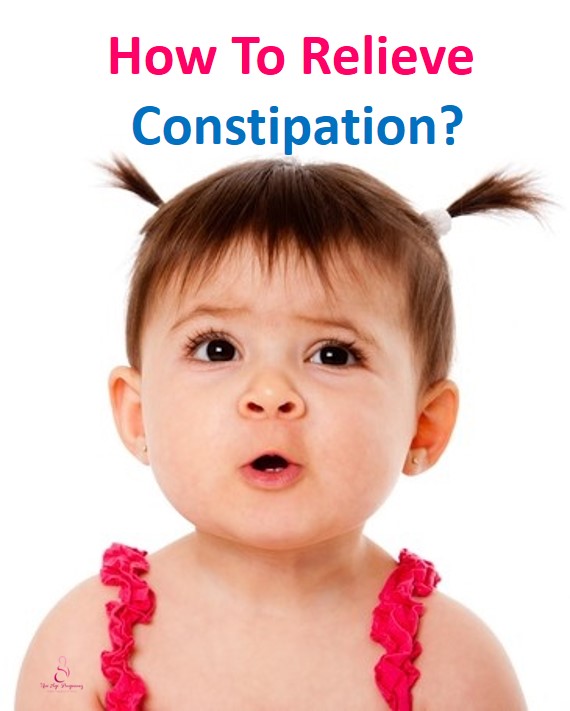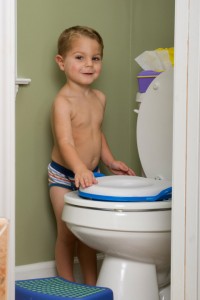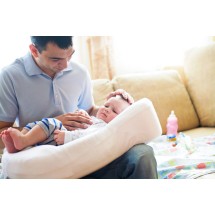
It is amusing that poop becomes one of the key items parents become concerned with – apart from changing diapers and cleaning the diaper area, parents will start to monitor poop to have a sense of the baby’s well-being. Babies and children can get constipation and different factors come into play depending on the child’s age and diet – let’s delve into poop!
Babies on Breast milk
 It’s rare for Breastfed babies to get constipation but one sign to note is the hardness of the stool. The harder the stool, the longer it could have stay in the intestine. Frequency of bowel movement is not a reliable indicator of constipation because breast milk being easily digested may lead to less frequent poop. Other signs to look out for are loss of appetite, irritability and discomfort during bowel movement. Soiled diapers during days without solid poop is also a sign of constipation as liquid stools can leak past the hardened stools.
It’s rare for Breastfed babies to get constipation but one sign to note is the hardness of the stool. The harder the stool, the longer it could have stay in the intestine. Frequency of bowel movement is not a reliable indicator of constipation because breast milk being easily digested may lead to less frequent poop. Other signs to look out for are loss of appetite, irritability and discomfort during bowel movement. Soiled diapers during days without solid poop is also a sign of constipation as liquid stools can leak past the hardened stools.
If there’s constipation, nursing moms can look into their diet as that may influence the bowel movement of the baby. Avoid dairy products and note if there’s any improvement. Also consider eating foods that adults normally eat to relieve constipation, such as prunes and pears. Massage and exercise for the baby can help too – parents can massage the baby’s tummy
and help move the baby’s legs in a cycling motion in the air.
Babies on Formula milk
 Bottle-fed babies are generally more susceptible to constipation due to ingredients in milk formula being less digestible than breast milk. First course of action will be to double-check that milk is prepared according to direction – it should neither be more concentrated nor diluted. Parents can also try changing brands or introducing water in between feeding (but limit to 1-2 ounce per day for a baby older than four months). Flax oil is also recommended to add to the formula milk. Likewise, massage and exercise helps too.
Bottle-fed babies are generally more susceptible to constipation due to ingredients in milk formula being less digestible than breast milk. First course of action will be to double-check that milk is prepared according to direction – it should neither be more concentrated nor diluted. Parents can also try changing brands or introducing water in between feeding (but limit to 1-2 ounce per day for a baby older than four months). Flax oil is also recommended to add to the formula milk. Likewise, massage and exercise helps too.
Young Children who started solids
Solids take longer to process than liquids and the intestines are more developed to hold food longer. Relief can come in a simple way of diet change – reducing certain foods while increasing others. Generally, increasing fibre and certain fruits help. For a young child, consider increasing prunes, peaches and pears which can either in the form of solids or liquids. Vegetables such as broccoli and beans can be prepared in a manner suitable for your child’s age.
 For an older child, consider increasing high fibre foods in the form of whole wheat, bran and brown rice. Since the child’s stomach is small, increasing the foods that relieve constipation can be matched with decreasing foods such as dairy products and white rice. Also ensure that the child is drinking enough water. Exercise, regular meals and a regular toileting routine help too.
For an older child, consider increasing high fibre foods in the form of whole wheat, bran and brown rice. Since the child’s stomach is small, increasing the foods that relieve constipation can be matched with decreasing foods such as dairy products and white rice. Also ensure that the child is drinking enough water. Exercise, regular meals and a regular toileting routine help too.
Children who are Potty Training
For this age group, it could be ignoring the urge to poo, being uncomfortable with potty that causes the child to hold back the poo. This becomes a vicious cycle as the longer the child holds the poo, the more likely it would result in pain or anal fissures that in turn reinforce the idea to the child not to poo. Parents can help the child overcome the emotional obstacle by finding out the source of their anxiety. This may include talking to preschool or caregiver. Parents may also decide to put toilet training on hold temporarily.
Should diet change not work, parents can try rectal stimulation with warm cotton ball. If it persist, a doctor’s consultation is required and glycerin suppository, lactulose or natural laxatives may be prescribed. Stress is also a contributing factor to constipation so don’t stress your child over the constipation!
By Mei






